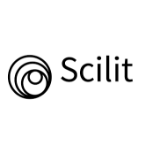Neuromuscular blocking agents are the substantial element of anesthesia in almost every surgical field. Nevertheless their use may be associated with rise in morbidity and mortality. Of importance are: the general state of the patient, liver and renal function, muscle relaxants metabolism, excretion, side effects and, above all, residual neuromuscular blockade. Prophylaxis of insufficient block reversal consists of proper dosing and timing of the muscle relaxant, neuromuscular transmission monitoring and pharmacologic reversal of the blockade. An ideal antagonistic agent reverses muscle paralysis rapidly and completely, disregarding its depth and total dose of muscle relaxant, has no side effects and is excreted by kidneys. The criteria are met by cyclodextrin gamma — sugammadex. In contrast to anticholinergic agents, which enhance the acetylcholine amount in the postsynaptic part of the neuromuscular junction, sugammadex encapsulates myorelaxant agent removing it from the junction.
Being authorized in 2008 sugammadex – Bridion is well known in Europe, but still used mostly in specific situations: CNI CNV, unexpectedly short time of surgical intervention, extreme obesity, neurologic pathology.
Keywords: Acceleromyography, Bridion, Neuro-Muscular Blockade, Residual Block, Sugammadex, TOF.
Citation: Sokół – Kobielska, E. (2025). BRIDION Sugammadex, Progress in Anaesthesiology. J Psychol Neurosci; 7(4):1-7. DOI : https://doi.org/10.47485/2693-2490.1131













